|
|
| If you’re headed out fishing, please do your part to keep yourself and others safe by following COVID-19 public health and safety guidelines. Go fishing only if you’re feeling well. Practice proper social distancing (at least 6 feet away from people who don’t live in your household) and keep a face covering handy for when social distancing cannot be maintained. Frequently wash your hands with soap and warm water, or use hand sanitizer.
As we turn the corner and head toward fall, fishing should only get better. Salmon runs are off to a slower start than last year. The action should pick up with rain and the cooler temperatures. Inland lakes are producing walleye, bass and panfish.
All anglers 17 years of age and older are required to have a fishing license.
|
Southeast Lower Peninsula
Lake Erie: Walleye anglers continue to take a few fish when trolling near Bolles Harbor and Fermi. Perch anglers were still getting a few near the River Raisin.
Detroit River: Yellow perch could be found near Celeron Island and Sugar Island when using shiners near the weed beds. Those targeting bass did well along the weed beds and around structure when using crawlers and leeches.
Lake St. Clair: Smallmouth bass were caught in many areas, including the Mile roads, Anchor Bay and in the channels with deep driving crankbaits, chatter baits and imitation minnows. Walleye were caught in deeper areas in the middle of the lake and near the shipping channel. Try crawler harnesses and crankbaits just over the weeds.
St. Clair River: Walleye fishing picked up some, especially during low light hours. Most of the fish caught were young and in the 13- to 15-inch range. Bigger fish should begin to show up as we move into fall. Smallmouth bass were caught along docks, pilings and drop-offs using dropshots and jigs. These fish will continue to hang out in the river until water temperatures start to decline. Sturgeon season is open, but effort was low.
Port Sanilac: A few smallmouth bass were caught off the pier when using crawlers in the evening.
Saginaw Bay: Perch fishing was spotty at best, with the better catches coming from the Saganing and Pinconning bars with minnows in 15 to 18 feet. Fish were caught in front of the Linwood Marina, 2 miles east of Spoils Island and in the old shipping channel in 16 feet. Perch action at the mouth of the Saginaw River was slow. A few fish were caught off Quanicassee and Geiger Road. Anglers had to put in a half day of fishing to get enough for a meal.
Back to Top |
Southwest Lower Peninsula
Dowagiac River: Due to the removal of the Pucker Street Dam, Losensky Park has been closed. Portions of the park will be open from Sept. 1-Oct. 31 to allow access during the fall salmon and steelhead run. This is an ongoing construction zone, so visitors are advised to enter the park at their own risk and respect the “no access” areas near the dam.
St. Joseph: The few boats able to get out were targeting lake trout in 70 feet. Boats trolling near the mouth of the river reported slow fishing. Perch fishing was slow. Pier anglers caught freshwater drum but no salmon or steelhead.
St. Joseph River: There were no salmon in the fish ladder at the Berrien Springs Dam; however, things could change quickly with the rain and cooler temperatures.
South Haven: Windy conditions have kept most boats off the lake, so very few salmon anglers were out. Perch fishing was slow, with only a few found both north and south of the piers in 50 feet. Lake trout were targeted in 90 feet.
Black River: Boats trolling for salmon reported slow fishing.
Holland: Pier anglers casting spoons had slow action for salmon and freshwater drum.
Lake Macatawa: The DNR ramp is closed due to high water.
Port Sheldon: Salmon action was slow, with a few caught 50 to 100 feet down in 80 to 180 feet with spoons, plugs and flies.
Grand Haven: The Harbor Island launch remains closed due to high water levels.
Grand River near Grand Rapids: No word yet on salmon in the river. Those targeting bass and catfish continue to take fish when using crawlers, minnows and plastics.
Grand River near Lansing: Weeds have made fishing difficult for shore anglers. Those who can find open water caught smallmouth bass and channel cats, especially late afternoon and at nightfall when using crawlers, minnows and topwater baits. Those targeting suckers and carp did better in the early morning.
Muskegon: Boats are finding a mix of salmon and trout in 180 to 275 feet with orange and green spoons 40 to 90 feet down. Those trolling for salmon near the piers did not have much luck.
Muskegon River: Water levels were up a bit but were dropping. Catch rates for smallmouth bass were good, and a few trout were found on the Little Muskegon River. Panfish continue to be caught, especially at Hardy Pond.
Back to Top |
Northeast Lower Peninsula
Cheboygan: Had no reports. Anglers may want to try trolling spoons in 30 to 50 feet along the shipping channel and off Lafayette Point.
Cheboygan River: Anglers were starting to see a few salmon, but no fish were caught as it is still a bit early. A few walleye, smallmouth bass and rock bass were still being caught when drifting or bottom bouncing worms and leeches.
Rogers City: With the recent strong winds, there is hope that a fresh batch of fish are now staging off Swan Bay. Try waters up to 70 feet deep. The temperature is not as important now, but fishing very early or very late is. Those fishing outside of Swan Bay in deeper water should still be able to find a mix of trout and salmon with downriggers, lead core, dipsey divers and copper throughout the water column. Look for baitfish and structure the rest of the season.
Presque Isle: Anglers caught trout, salmon and walleye when looking for baitfish in 50 to 130 feet. Anglers did well between the two lighthouses and south toward Stoneport. Lake trout were hitting spoons, dodgers and spin-glo’s near the bottom. All others were caught halfway down.
Alpena: Trout and salmon are still being caught when trolling spoons, spin-glo’s and flasher/fly combos at the “Humps,” off Thunder Bay Island and the Nordmeer wreck. Most fish were found in 80 to 150 feet, with salmon scattered throughout the water column and lake trout near the bottom. Slow walleye fishing, with a few taken on body baits in 35 feet or on spoons suspended in deeper water. Good smallmouth action when casting jigs and body baits in front of the harbor.
Thunder Bay River: Anglers caught a few smallmouth bass, freshwater drum, channel cats, undersized walleye and rock bass when drifting or floating crawlers.
Oscoda: Lake trout, steelhead, pink salmon and walleye were caught when trolling spoons and spin-glo’s out to the Oscoda Ridge. Fish were 40 to 90 feet down in 90 to 160 feet. Lake trout were found near the bottom. A couple steelhead and walleye were caught in shallower water. Pier anglers caught channel cats, smallmouth bass, rock bass and a few yellow perch on crawlers. Those casting spoons for salmon had no luck.
Au Sable River: The river had cooled to the mid-60s below Mio and was still in the mid-70s below Foote Dam. Those fishing the lower river caught a few rock bass, smallmouth bass and nice channel cats when using crawlers. The occasional walleye was caught when casting jigs or still fishing with crawlers. A few pike were caught by those trolling or casting crankbaits and jigs.
Higgins Lake: Lake trout were not biting, and there was no word on cisco. Perch were caught near the islands in 30 to 40 feet; however, anglers were sorting through a lot of small ones. Rock bass continue to be caught, and smallmouth bass were found along the drop-off.
Houghton Lake: The bluegill action was fair to good mid-morning to early afternoon. Fish were hitting leeches and red worms in 6 to 10 feet or 6 feet down in deeper water. A couple walleye were taken by those trolling or fast drifting a crawler harness in 12 to 14 feet. Bass were taken on live or artificial crawlers and leeches.
Tawas: Good numbers of walleye were caught inside the bay out near buoys 4 and 6 with crawlers and lindy rigs or Erie dearies and body baits in 15 to 20 feet. Walleye, steelhead and lake trout were caught out past buoy 2 with spoons in 50 to 70 feet.
Tawas River: Had slow fishing, with only a few small perch and a couple freshwater drum taken on crawlers at Gateway Park.
Au Gres: Walleye were caught out near the Charity Islands in 30 to 50 feet with crawlers, spoons or body baits. Perch fishing was spotty out near Pt. Au Gres in 20 to 30 feet and near the Saganing and Pinconning bars. Out from the Pine River, a few bigger fish were taken in 15 to 18 feet. Largemouth bass were hitting spinners and body baits in the shallows.
Back to Top |
Northwest Lower Peninsula
Harbor Springs: More boats were targeting salmon from Harbor Point to the east. A few Chinook and coho were caught 100 to 120 feet down in over 160 feet. Cisco and lake trout were caught as well around Harbor Point.
Petoskey: Those targeting salmon were trolling between the breakwall and Bay Harbor but did not have much luck, with only a couple fish taken on meat rigs and flies in 100 to 130 feet. On the Bear River, those fishing at the mouth and up near the dam caught very few salmon.
Charlevoix: Most anglers are focusing on salmon between the channel and the cement plant. Some are starting to fish shallower water near Medusa Creek. Chinook were still caught out deeper and 110 feet down near the red can at the cement plant. A lake trout or two was also caught when jigging near the bottom in the same area. Good-size smallmouth bass were caught in the channel when using crawlers and leeches on the bottom. No word on salmon in the channel yet. A few anglers were targeting salmon in Lake Charlevoix and on both the Boyne and Jordan rivers.
Traverse City: Those fishing the East Bay caught salmon along the west side from the Center Road launch to south of the white wall and off Deepwater Point with spoons, J-plugs and a flasher/fly combo. Those targeting cisco have done well. Lake trout and smallmouth bass fishing was slow. In the West Bay, salmon were caught in the hole near the Boardman River using the same. Smallmouth bass action was slow, and still no word on perch.
Frankfort: Strong winds rolled the lake over, dropping water temperatures. Chinook salmon are staging outside the pier heads, in the harbor and in the bay. They were hitting on blue spoons and a few ladderback J-plugs. Coho were reported in Platte Bay; however, the bite was slow at times.
Betsie River: Is starting to see the occasional salmon in the lower river, but no big numbers yet.
Onekama: With cooler water, Chinook were found in 75 to 100 feet when trolling north to the golf course. Lake trout were caught in the “Barrel.”
Portage Lake: Bluegill catches were up after the rain, but perch and bass numbers were still on the low side.
Manistee: Chinook, coho and a couple steelhead were caught straight out from the harbor and along the Shelf in 90 to 120 feet or deeper at 150 to 200 feet. J-plugs and spoons worked best. Those fishing in the evening found Chinook and coho both north and south of the harbor in 70 to 180 feet.
Manistee River: August 2020 is not seeing the big runs that 2019 brought. There are some reports of a few salmon in the lower stretches, but no big numbers yet. The occasional steelhead and brown trout were still being caught.
Ludington: After recent strong winds, good numbers of Chinook were caught just outside the harbor in 40 to 50 feet with spoons, J-plugs and a flasher/fly combo. Chinook, coho and steelhead were found straight out in 100 feet and off Big Sable Point in 80 to 100 feet.
Pere Marquette River: A couple salmon were noted in the lower stretches, but no big numbers yet.
Back to Top |
Upper Peninsula
Keweenaw Bay: Catch rates were spotty, and most of fish caught were lake trout when trolling or jigging. A few Chinook were caught along with coho and steelhead, but these numbers were much lower compared to the lake trout. All launches are open and ready for anglers.
Marquette: A few trolling for salmon from the Lower Harbor to the mouth of the Chocolay River had no luck. Lake trout fishing continues to be good from the White Rocks to the Little Presque Isle area along the drop-offs in 140 to 180 feet. The fish are staging for spawning. The Carp River had a few shore anglers casting; however, the current was strong with high water levels. The Chocolay and the Dead River Tourist Park area also had high water levels.
Little Bay de Noc: The better walleye fishing was still south, although a few more catches were reported throughout the bay. In Kipling anglers trolling the Second and Third reefs reported fair catches using crawler harnesses or stick baits in 25 to 32 feet. Fish were caught in the Ford River area to Round Island with the same in 10 to 20 feet at night. Fair to good catches at the Minneapolis Shoals in 20 to 30 feet. Perch anglers in Kipling reported fish in the Butler Island area using crawlers in 10 to 25 feet. Several large northern pike were reported around the Escanaba ship docks trolling crankbaits, spoons or bucktails in 8 to 14 feet early morning. Smallmouth bass are starting their fall patterns, as some anglers reported catches in the “Black Bottom” area using plastics along the breaks and weed lines in 14 to 18 feet. Though very few salmon were caught in the bay, now is the time to start checking the rivers.
Manistique: While it is still early, a few boats were out about 2.5 miles looking for staging fish, but only a few catches were reported.
Manistique River: A few salmon are in the river, along with a fair number of brown trout. While there may not be a large run this fall, there should be enough fish to make it worthwhile. Walleye anglers are still doing well. Most were trolling or casting jigs with crawlers at night.
Munising: Lake trout were caught near the White Rocks, Wood Island Reef and in Trout Bay. Strong winds helped cool water temperatures, which should be in the mid to upper 60s now. Pier anglers were out but had to leave due to waves coming over the pier. Water levels on the Anna River were very high.
Raber: Walleye slowed in Raber Bay. A few pike were caught between Little and Big Lime Island when trolling or casting a spoon with a red eye in 6 to 10 feet. Anglers are reporting nice catches of smallmouth bass at Round Island. Try orange spotted tube jigs in 4 to 8 feet off the rocks.
Detour: Chinook salmon fishing slowed considerably this week at the Detour Reef and lighthouse. The few caught were in deep water. Try 55 to 60 feet down in 100 to 140 feet and look for structure. Pink salmon are still being caught near the lighthouse. Good lake trout action south of the lighthouse along the 90-foot flat with spin-glo’s behind flashers. Hot colors were orange and white or chartreuse.
Cedarville and Hessel: A few Chinook and pink salmon were caught near the Cedarville Quarry when trolling near buoys 3-5 in 80 feet. Yellow perch were caught across from Viking Boat Works near the cattails in 8 feet with worms and shiners. Good largemouth bass throughout the Les Cheneaux Islands when fishing near structure. Good smallmouth action at the Middle Entrance with dark orange spotted or green tube jigs in 6 to 8 feet. At Hessel, larger schools of splake were reported at the marina fishing pier. Fish were caught when jigging orange and gold spoons in the early morning. Yellow perch 8-9 inches were caught on shiners and worms at the finger docks in the marina.
Carp River: Anglers were still catching walleye and perch drifting and bottom bouncing leeches and worms, though leeches seemed to work best.
Nunns Creek: One or two anglers were casting spoons for salmon at the mouth, but no fish were caught.
Back to Top |
Fishing Tip: Avoid these mistakes to experience great fishing
Did you know simple mistakes can make or break your fishing adventures? Check out these basic things to avoid if you want to have better success on the water:
- Make sure your reel is filled with line – don’t wait until it gets to half-empty and risk losing a great catch due to an inadequate amount of line.
- Check your knots – monitor their strength and durability after each fish. If the strength gets compromised, cut the line down a few feet and start again.
- Set the hook – don’t forget to do this each time you even think you’ve got a bite. Why waste a great catch just because you forgot to set the hook?
Want more tips for fishing in Michigan? Visit Michigan.gov/Fishing.
Back to Top |
|
This report is intended to give you an idea of what is going on around the state. Updates come from Fisheries staff and conservation officers. With more than 11,000 inland lakes, the Great Lakes and thousands of miles of rivers and streams, not all locations can be listed. However, it is safe to say if a species is being caught in some waters in the area, they are likely being caught in all waters in that section of the state that have that species. |
|
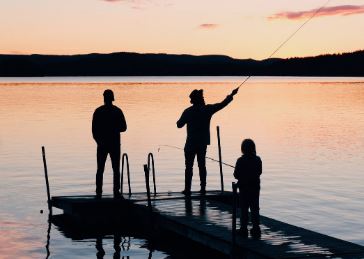


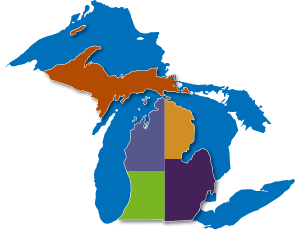
 Southeast Lower Peninsula
Southeast Lower Peninsula Southwest Lower Peninsula
Southwest Lower Peninsula Northeast Lower Peninsula
Northeast Lower Peninsula Northwest Lower Peninsula
Northwest Lower Peninsula Upper Peninsula
Upper Peninsula Great Lakes Temperature Map
Great Lakes Temperature Map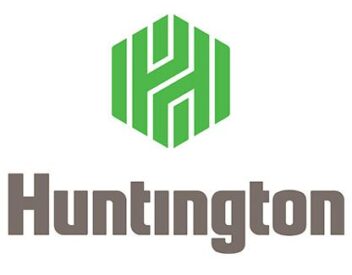

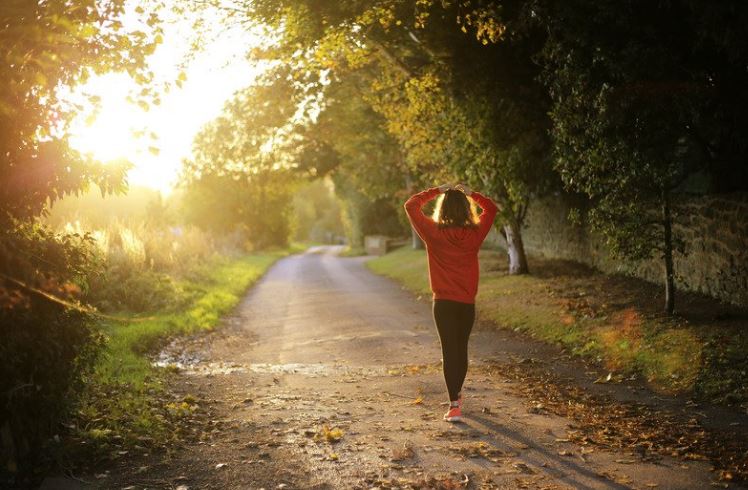
 Are you up for a challenge? During
Are you up for a challenge? During 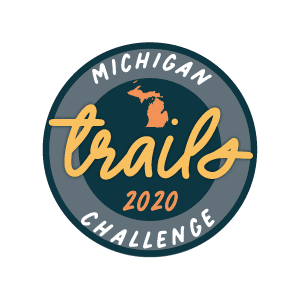 “Michigan Trails Week is the perfect time to get out and explore Michigan’s amazing network of trails,” said Ron Olson, chief of the DNR Parks and Recreation Division. “Whether it’s on your first trail, your favorite trail or one brand new to you, the Michigan Trails Week Challenge is for anyone and everyone who wants to get out of the house and connect with nature.
“Michigan Trails Week is the perfect time to get out and explore Michigan’s amazing network of trails,” said Ron Olson, chief of the DNR Parks and Recreation Division. “Whether it’s on your first trail, your favorite trail or one brand new to you, the Michigan Trails Week Challenge is for anyone and everyone who wants to get out of the house and connect with nature.
 “During this past year, trails have provided me with endless peace of mind,” said Andrea LaFontaine, executive director of the Michigan Trails and Greenway Alliance. “Now, more than ever, we are seeing the importance of trails to our personal well-being and to our communities. I encourage you to invite a friend, recruit a family member and sign up for the event. I look forward to hitting the trails with you, virtually!”
“During this past year, trails have provided me with endless peace of mind,” said Andrea LaFontaine, executive director of the Michigan Trails and Greenway Alliance. “Now, more than ever, we are seeing the importance of trails to our personal well-being and to our communities. I encourage you to invite a friend, recruit a family member and sign up for the event. I look forward to hitting the trails with you, virtually!”



 After
After  Streets, parks and other public spaces are going to look a little greener thanks to a grant program sponsored by the Michigan Department of Natural Resources, the DTE Energy Foundation and the nonprofit ReLeaf Michigan. Twenty-eight Michigan communities will plant 1,100 trees in those spaces, sharing $91,870 in grants dedicated to tree-planting projects.
Streets, parks and other public spaces are going to look a little greener thanks to a grant program sponsored by the Michigan Department of Natural Resources, the DTE Energy Foundation and the nonprofit ReLeaf Michigan. Twenty-eight Michigan communities will plant 1,100 trees in those spaces, sharing $91,870 in grants dedicated to tree-planting projects.
 As waterfowl season nears, hunters are reminded to take steps to prevent the spread of invasive species. Cleaning and drying boats and gear, then draining bilges and water tanks, can help maintain quality habitat in Michigan’s waters.
As waterfowl season nears, hunters are reminded to take steps to prevent the spread of invasive species. Cleaning and drying boats and gear, then draining bilges and water tanks, can help maintain quality habitat in Michigan’s waters.
 Preparing for everything from a bee sting and bear sightings to blocked roads and bad weather helps ensure an enjoyable adventure in the outdoors, especially if you’re heading into the wilder side of Michigan’s public lands.
Preparing for everything from a bee sting and bear sightings to blocked roads and bad weather helps ensure an enjoyable adventure in the outdoors, especially if you’re heading into the wilder side of Michigan’s public lands.